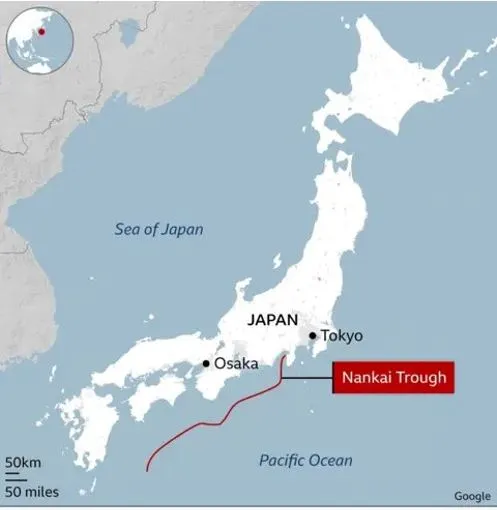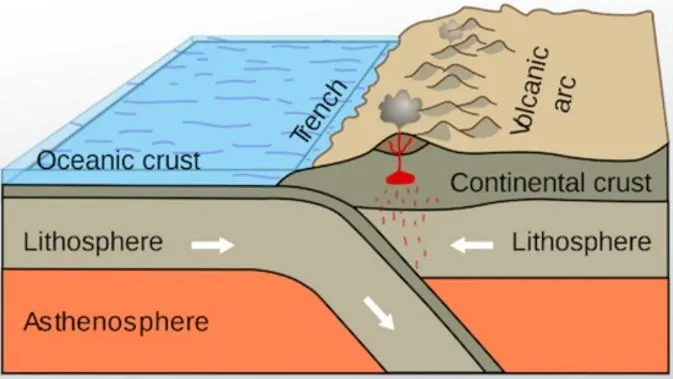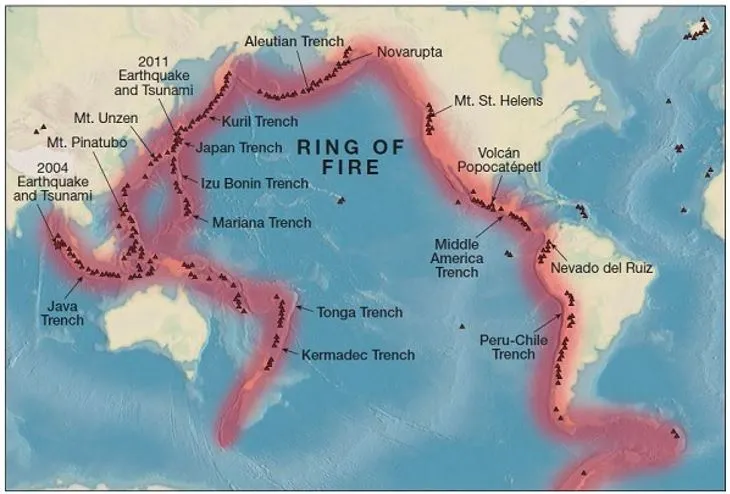

10th August 2024 (9 Topics)
Mains Issues
Context
The Indian government referred the Waqf (Amendment) Bill, 2024, to a Joint Committee of Parliament. The Bill aims to amend the existing Waqf Act, 1995, which governs the administration and regulation of Waqf properties in India. The Bill has faced strong opposition from various parties, who argue that the proposed changes are unconstitutional and anti-minority.
What is Waqf?
- A Waqf is property given by Muslims for religious, charitable, or private purposes. The ownership is considered to be with God, and the property is used for the designated purpose indefinitely.
- Formation: A Waqf can be created through a deed, orally, or by long-term use for religious or charitable purposes.
- Governance: Waqf properties are governed by the Waqf Act, 1995, which replaced earlier laws including the Muslim Waqf Validating Act, 1913, and the Central Waqf Act, 1954.
- Current Governance of Waqf Properties
- Management: Managed by a mutawalli (caretaker) and regulated by state Waqf Boards, Waqf Councils, and Tribunals.
- Dispute Resolution: Disputes are resolved by Waqf Tribunals, which are state-appointed bodies including a judicial officer, a civil services officer, and an expert in Muslim law.
- Function of Waqf Boards: These boards oversee the administration and recovery of Waqf properties and are composed of members from the Muslim community and state government representatives.
Proposed Changes in the Waqf (Amendment) Bill, 2024
- Renaming of the Act: The Bill proposes renaming the Waqf Act, 1995, to the Unified Waqf Management, Empowerment, Efficiency, and Development Act, 1995.
- New Provisions:
- Section 3A: Specifies that only lawful owners can create Waqf. This aims to clarify the ownership of property designated as Waqf.
- Section 3C(1): States that government property declared as Waqf before or after the Act's commencement will not be considered Waqf property.
- Section 3C(2): Empowers the government to determine if a property is government land. A Collector will make this determination, delaying Waqf management until the report is submitted.
- Audit and Oversight: The central government will have the authority to direct audits of Waqf properties by auditors appointed by the Comptroller and Auditor-General of India.
- Removal of "Waqf by User": The Bill proposes removing the concept of "Waqf by user," which previously allowed properties used for religious purposes to be deemed Waqf. This change will require a formal Waqfnama (declaration) for properties to be recognized as Waqf.
- Composition of Waqf Boards: The Bill suggests altering the composition of Waqf Boards to include at least two non-Muslim members and potentially a non-Muslim CEO, increasing state government control over Waqf properties.
Significance of the Amendments
- Increased Government Control: The proposed amendments shift significant powers from Waqf Boards and Tribunals to state governments, potentially altering how Waqf properties are managed and regulated.
- Legal Clarifications: Changes aim to address issues regarding the ownership and classification of properties as Waqf, and improve transparency and accountability.
- Controversy: The Opposition argues that these changes may undermine the autonomy of the Waqf institutions and negatively impact the management of Waqf properties.


Prelims Articles
Context
On August 8, 1942, Mahatma Gandhi delivered his famous 'Do or Die' speech in Bombay, marking the beginning of the Quit India Movement, a pivotal moment in India's struggle for independence. Delhi University (DU) played a significant role in this movement.
The Roots of Activism in DU
- Early Activism at DU
- University Relocation: Delhi University moved to its current site in the 1930s, with notable faculty appointments like VKRV Rao and DS Kothari.
- Student Engagement: The All India Students' Federation (AISF) and leaders like Subhas Chandra Bose significantly increased student activism at DU.
- Student Protests
- Major Strikes: Following the arrest of Congress leaders, students from St. Stephen’s and Hindu College organized a march. IP College students scaled gates to join the protests.
- Nationalist Campaigns: Students participated in demonstrations, supported Khadi promotion, and helped distribute anti-British literature.
Fact Box: Quit India Movement
|


Prelims Articles
Context
Japan has issued its first-ever advisory on the heightened risk of a "megaquake" following a strong magnitude 7.1 earthquake along the Pacific coast’s Nankai Trough. This advisory highlights the potential for a much larger and more destructive earthquake in the near future.
What is the Nankai Trough?
- Nankai Trough is a seismic zone off Japan's southwest Pacific coast, extending approximately 900 km (600 miles).
- It is where the Philippine Sea Plate is subducting beneath the Eurasian Plate, leading to significant tectonic strain.
- Simply put, it is an underwater subduction zone where the Eurasian Plate collides with the Philippine Sea Plate, forcing the latter under the former and into the Earth’s mantle.
- Megaquakes in the Nankai Trough are expected roughly once every 100 to 150 years.

Key-Concepts
|


Prelims Articles
Context
The Union Cabinet approved the Pradhan Mantri Awas Yojana-Urban (PMAY-U) 2.0 to provide financial assistance to urban poor and middle-class families to construct, purchase, or rent affordable housing.
About PMAY-U 2.0
- The scheme aims to enable the construction, purchase, or rental of affordable houses in urban areas.
- The scheme is designed to support one crore families over the next five years, with an allocated budget of Rs 2.30 trillion.
- PMAY-U 2.0 will be implemented as Centrally Sponsored Scheme (CSS), except for the Interest Subsidy Scheme (ISS) component, which will be implemented as Central Sector Scheme.
- Beneficiaries: Focus on families belonging to economically weaker sections (EWS), low-income groups (LIG), and middle-income groups (MIG) with no existing pucca house.
- Funding and Implementation
- Total Investment: Rs 10 trillion, with Rs 2.30 trillion specifically allocated for financial assistance.
- Previous Achievements: Under the first phase of PMAY-U 2.0, 1.18 crore houses were sanctioned, and over 85.5 lakh houses have been completed and delivered.
- Eligibility Criteria
- EWS (Economically Weaker Sections): Families with an annual income up to Rs 3 lakh.
- LIG (Low Income Group): Families with an annual income between Rs 3 lakh and Rs 6 lakh.
- MIG (Middle Income Group): Families with an annual income between Rs 6 lakh and Rs 9 lakh.


Prelims Articles
Context
Recently, 50 Opposition Members of Parliament (MPs) have initiated a move to bring a no-confidence motion against Vice-President Jagdeep Dhankhar. This development comes amidst rising tensions in Parliament and allegations of the Vice-President's perceived biases. The motion is being pursued under Article 67(B) of the Indian Constitution, which outlines the procedure for the removal of the Vice-President.
What is a No-Confidence Motion?
- A no-confidence motion is a parliamentary tool used to test the support of the legislature (Lok Sabha) for the government in power.
- It assesses whether the government retains the confidence of the majority of MPs.
- Outcome: If a majority of MPs support a no-confidence motion, the government is deemed to have lost confidence and must resign. Conversely, if a confidence motion is rejected, it indicates a lack of support for the government.
- Application to Vice-President: Article 75(3) of the Constitution requires that the government must be collectively responsible to the Lok Sabha. This responsibility is tested through trust or no-confidence votes.
- The no-confidence motion against the Vice-President involves a separate process compared to the government’s trust votes.
- No-Confidence Motion Against the Vice-President
- Constitutional Provision: Article 67(B) article provides the procedure for the removal of the Vice-President. It states that the Vice-President can be removed by a resolution of the Rajya Sabha (Council of States) passed by a majority of all its members and agreed to by the Lok Sabha (House of the People).
- Notice Requirement: At least 14 days' notice must be given before moving the resolution.
The Vice-President of India
|


Prelims Articles
Context
India is set to introduce the BPaL (bedaquiline, pretomanid, and linezolid) regimen for treating multi-drug-resistant (MDR) and extensively drug-resistant (XDR) tuberculosis (TB) patients.
What is the BPaL Regimen?
- The BPaL regimen consists of three drugs:
- Bedaquiline: An anti-TB drug effective against drug-resistant strains.
- Pretomanid: A newer drug with proven efficacy against resistant TB strains.
- Linezolid: An antibiotic used in combination to enhance treatment effectiveness.
- The World Health Organization (WHO) recommended BPaL and similar regimens in 2022 for their efficacy and cost-effectiveness.
- Benefits:
- Reduced Duration: BPaL shortens the treatment period from 18-24 months to about 6 months.
- Simplified Treatment: Patients will take just three daily tablets compared to 14 different drugs in the older regimen.
- Improved Adherence: Shorter and less complex treatment increases the likelihood of patients completing their therapy.
Fact Box: About Tuberculosis (TB)
|


Editorials
Context
The global refugee crisis is intensifying with ongoing conflicts and human rights abuses leading to increased displacement. The female refugee demographic faces unique challenges due to gender-specific vulnerabilities and barriers to accessing mental health services. This issue is highlighted in the context of India's refugee population and its inadequate support systems.
The Gendered Impact of Displacement
- Increased Vulnerabilities: Female refugees are disproportionately burdened with caregiving responsibilities, facing increased risks of gender-based violence and psychological trauma.
- Mental Health Challenges: Refugee women are more likely to suffer from PTSD and depression compared to men, exacerbated by traumatic experiences and inadequate mental health support.
- Limited Access to Services: Social stigma, lack of awareness, and financial constraints hinder access to mental health services, with refugee women often receiving inadequate care.
Legal and Policy Framework
- International Commitments: The UN Convention on the Rights of Persons with Disabilities (UNCRPD) recognizes the rights of individuals with psychosocial disabilities, including refugee women, though this is not reflected in Indian law.
- Indian Legislation: The Rights of Persons with Disabilities Act, 2016 (RPWDA) provides for persons with mental illness but does not explicitly cover refugee women, leaving a significant gap in their access to rights and services.
- Supreme Court's Stance: While refugees are guaranteed the right to health under Article 21, practical access to healthcare services remains limited, especially for those with psychosocial disabilities.
Need for Policy Reform
- Lack of Framework: India lacks a specific refugee protection framework, impacting the implementation of international commitments and domestic rights for refugees with disabilities.
- Need for Data Collection: There is a critical need for disaggregated data on the health conditions of refugees, particularly those with disabilities, to inform effective policy-making.
- Future Actions: Establishing a uniform, codified refugee framework is essential for addressing the needs of refugees with disabilities and aligning with the 2030 Agenda for Sustainable Development.
Mains Question
Q. Discuss the specific challenges faced by female refugees with psychosocial disabilities in India. How can India's legal and policy frameworks be improved to address these challenges and align with international standards?


Editorials
Context
The Indian decadal Census, critical for capturing comprehensive demographic and socio-economic data, has been delayed by over three years. This delay undermines the reliability of existing surveys and hinders effective policy-making and program evaluation.
Importance of the Census
- Comprehensive Data Collection: The Census provides essential data beyond mere population counts, including detailed information on education, employment, health, and familial structures, which are vital for policy planning and implementation.
- Reliability of Surveys: Large-scale surveys like the National Family Health Survey rely on Census data for accuracy. Delaying the Census affects the reliability of these surveys and the validity of derived indicators.
- Impact on Development Indicators: Absence of current Census data compromises the generation of Sustainable Development Goal (SDG) indicators, which depend on accurate population counts and demographic segmentation.
Consequences of Delay
- Misleading Program Evaluations: Without updated Census data, assessing the success and impact of government schemes and programs becomes problematic, leading to potentially misleading evaluations.
- Inaccurate Population Estimates: Relying on projections and extrapolations from outdated data can distort our understanding of demographic changes, affecting policy decisions and resource allocation.
- Urgency vs. Alternatives: Despite the availability of other statistical methods, these are insufficient substitutes for the comprehensive data provided by the Census, raising concerns about whether the delay is intentional.
Caste Census Debate
- Political Motivations: The call for a caste Census appears driven more by political motives than by genuine need for data on socio-economic inclusion, potentially skewing the focus away from broader demographic needs.
- Historical Context: Historical census practices show that caste auditing was initially included but later discontinued, suggesting that the current demand for caste Census may not align with its intended purpose.
- Focus on Development: Assessing socio-economic mobility and deprivation through education and occupation, rather than through caste-based audits alone, would offer a more comprehensive understanding of progress and needs.
Mains Question
Q. Discuss the implications of the delayed Census in India on policy-making and program evaluation.


Editorials
Context
The Reserve Bank of India’s Monetary Policy Committee (MPC) has decided to maintain the benchmark interest rates unchanged for the ninth consecutive meeting due to persistent inflationary pressures, especially from food prices. The decision highlights ongoing concerns about consumer confidence and inflation expectations.
MPC’s Decision and Inflation Trends
- Interest Rates Unchanged: The MPC voted 4-2 to hold the benchmark interest rates steady, emphasizing the need to address elevated inflation and its impact on consumer confidence.
- Food Price Pressures: Food prices, particularly for vegetables like tomatoes, onions, and potatoes, have significantly risen, contributing to high inflation and affecting household budgets. The MPC noted a 62% surge in tomato prices and other substantial increases in staple foods.
- Inflation Projections Revised: The MPC raised its retail inflation projections for the July-September quarter to 4.4%, up from 3.8%, and expects inflation to continue at 4.7% in the following quarter, indicating a less favorable near-term inflation outlook.
Policy Implications and Economic Concerns
- Impact on Core Inflation: Core inflation may have bottomed out, with risks from persistent food price pressures and potential mobile tariff revisions affecting broader non-food inflation, according to the MPC.
- Consumer Confidence and Economic Impact: Persistent high inflation, particularly in food prices, is undermining consumer confidence and complicating the RBI’s monetary policy stance, as it aims to ensure price stability for sustained economic growth.
- Critique of Economic Survey Suggestion: The RBI Governor dismissed the Economic Survey’s suggestion to consider delinking food prices from inflation targeting, arguing that food prices remain crucial to understanding overall inflation and consumer impact.
Mains Question
Q. How do rising food prices and inflation projections affect monetary policy and consumer confidence? Discuss the significance of food prices in the inflation targeting framework and the potential impact on economic stability.






